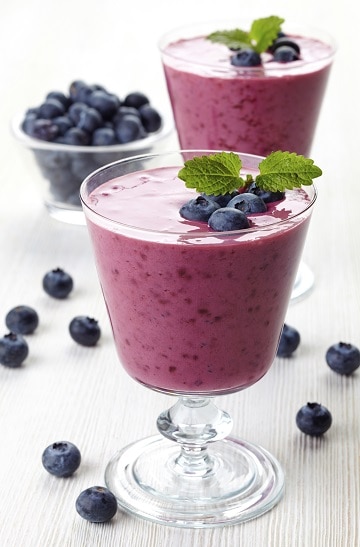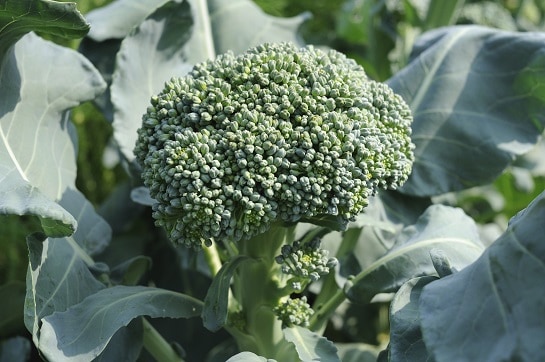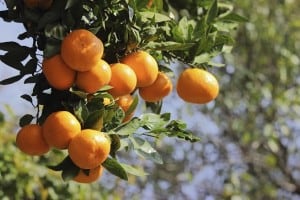 Every year, it seems like more unique compounds are being discovered in plant foods, from fruits to vegetables to spices. Many are filed under “antioxidants” but have far more specific powers, from boosting collagen to reducing oil production. Many create a food’s signature taste, like curcumin in turmeric, yet took millennia after ancient kings first enjoyed them in banquets to be identified as the compounds responsible for their deliciousness.
Every year, it seems like more unique compounds are being discovered in plant foods, from fruits to vegetables to spices. Many are filed under “antioxidants” but have far more specific powers, from boosting collagen to reducing oil production. Many create a food’s signature taste, like curcumin in turmeric, yet took millennia after ancient kings first enjoyed them in banquets to be identified as the compounds responsible for their deliciousness.
Importantly, dozens of the hundreds if not thousands identified have potential for acne. There’s such variety of powerful plant compounds, and this is why I recommend eating a variety of plant foods. By covering 3 fruits, 2 vegetables, and 1 herb or spice daily, you will flood your body with skin-clearing nutrition from multiple angles, sucking in all the special molecules that a botanical garden or tropical palm forest has to offer.
Many compounds are doubtlessly undiscovered, and many which are identified aren’t fully researched. You don’t have to understand the pharmacological properties and molecular pathways of every compound to clear acne; you can activate a cheat code and trust ginger or strawberries to do the work for you.
Nevertheless, here are 10 specific compounds in the plant food kingdom with promising acne powers.
One- pterostilbene (blueberries)
While they lack the protein-digesting powers of pineapple, blueberries are almost unbeatable when it comes to the acne-clearing basics of lowering inflammation and boosting antioxidants. With each tasty blueberry you swallow, a little more inflammation is extinguished in your body. Part of this is down to pterostilbene, a rare phytoalexin which may have anti-obesity powers, reducing lipogenesis in fat tissue.
Pterostilbene is also found in almonds and cranberries, with blueberries dominating among popular fruits. It’s a close chemical analog of the resveratrol found in grapes and red wine, a much researched compound for extending lifespan, via a gene called SIRT-1 which controls energy influx into cells.
Pterostilbene has the advantage of superior absorption, achieving 80% in humans versus 20% for the more famous resveratrol. Likewise, its half-life is a long 105 minutes, against 14 minutes, and dosages of up to 250mg daily have been found to be harmless in humans. Pterostilbene is highly promising for the basic acne powers, inhibiting the pro-inflammatory chemical TNF-a, which was specifically found to be higher in acne patients in a 2021 study.
Two – lutein (kale)
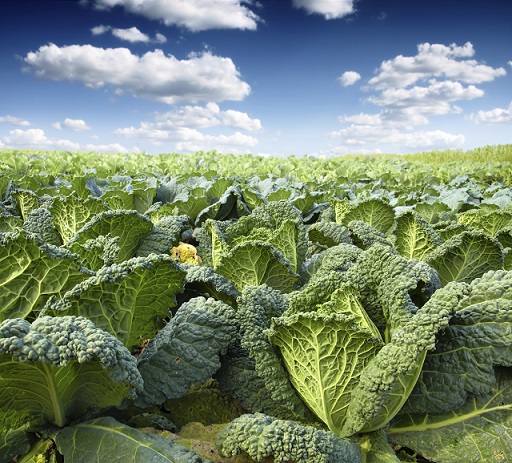
Lutein is an antioxidant best known for building itself into the macula of the retina, and preventing light-induced damage. But it’s also an underestimated skin-clearing compound. Lutein is a fat-soluble antioxidant, similarly to the beta-carotene which gives carrots their redness. Eggs are traditionally hailed as a wonder source, with one raw egg possessing 331mcg. But the best sources of lutein are actually kale and spinach, with 35571mcg and 15691mcg per 100 grams apiece.
The special feature of lutein is that along with eye cells, it preferentially accumulates in skin cells. Not only does it possess the armouring powers of most carotenoid antioxidants, but in the exact location acne patients require.
Lutein has an endless stream of normal studies. In one study, human volunteers took 10mg or 20mg of lutein for 12 weeks. Two important biomarkers for acne patients plummeted: C-reactive protein, which measures chronic inflammation, and malondialdehyde, which measures lipid peroxidation, essentially the oxidation of the fatty substances.
The latter is important because oxidising sebum (oil) on your face generates toxic by-products that trigger pimple formation. Lutein in kale and spinach can prevent this.
Three – oleocanthal (olive oil)
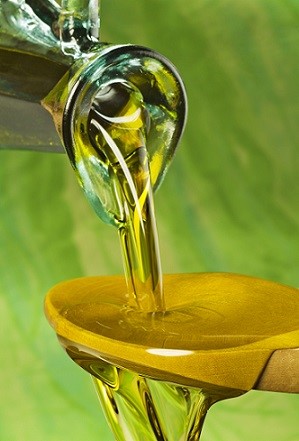 We could probably write a full article on 10 olive oil compounds alone, but this superfood’s signature molecule is probably oleocanthal, just edging out oleuropein. Olive oil’s stonking vitamin E content is already reason to splash a spoonful on your salad daily, combined with a helping of probiotic Lactobacillus bacteria from the olives’ slimy skins. Oleocanthal take it to the next level, by calming chronic inflammation, the root cause of acne. Oleocanthal is especially powerful against cyclooxygenase-2 (COX-2), the same master inflammatory regulator that non-steroidal anti-inflammatory drugs (NSAIDs) like aspirin target. Similarly, a study on whole olive oil (50ml) found that oleocanthal quantities were high enough to match 10% ibuprofen once again.
We could probably write a full article on 10 olive oil compounds alone, but this superfood’s signature molecule is probably oleocanthal, just edging out oleuropein. Olive oil’s stonking vitamin E content is already reason to splash a spoonful on your salad daily, combined with a helping of probiotic Lactobacillus bacteria from the olives’ slimy skins. Oleocanthal take it to the next level, by calming chronic inflammation, the root cause of acne. Oleocanthal is especially powerful against cyclooxygenase-2 (COX-2), the same master inflammatory regulator that non-steroidal anti-inflammatory drugs (NSAIDs) like aspirin target. Similarly, a study on whole olive oil (50ml) found that oleocanthal quantities were high enough to match 10% ibuprofen once again.
Oleocanthal has many faces, as a 2013 study even reduced amyloid plaques in mice brains, the Alzheimer’s factor which scientists are currently laser focused on. It’s partly behind olive oil’s pungent flavour, and creates a stinging sensation in the throat when eaten.
One interesting study found that olive oil can somehow boost production of glutathione, the human body’s main self-manufactured antioxidant. Oleocanthal might be the secret compound responsible.
Four – quercetin (onions)
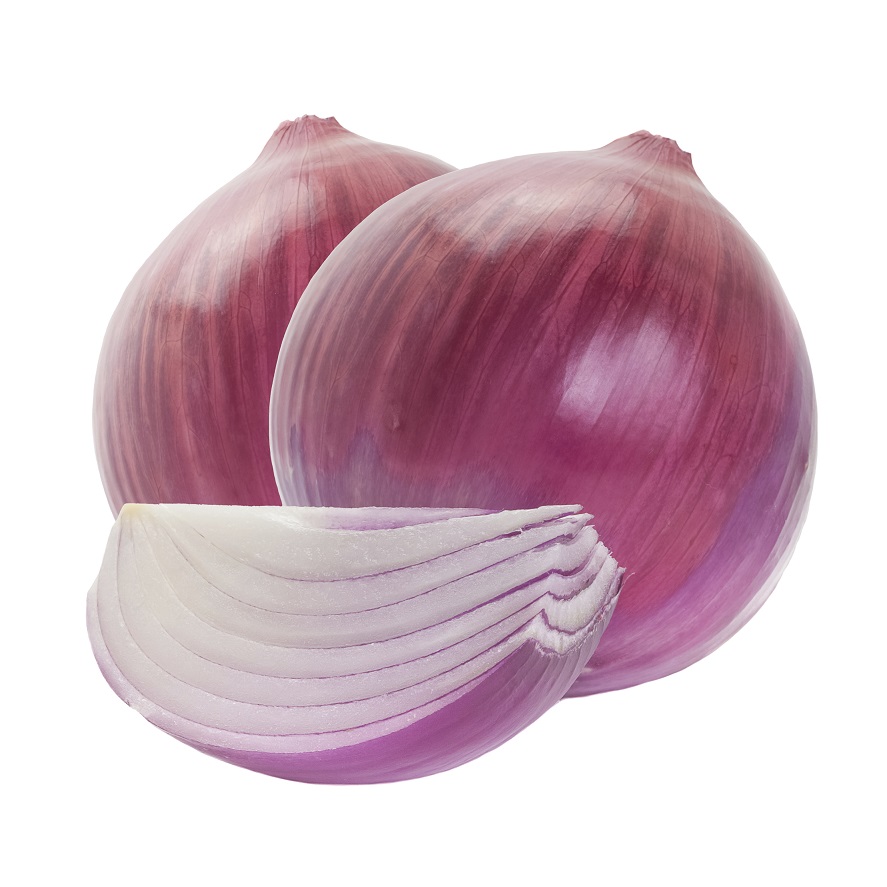 Quercetin is a molecule found in many plant foods, but heavily concentrated in a select few. While its antioxidants and anti-inflammatory properties are strong, where quercetin really shines is in healing gut disorders, including those that subtly manifest as acne.
Quercetin is a molecule found in many plant foods, but heavily concentrated in a select few. While its antioxidants and anti-inflammatory properties are strong, where quercetin really shines is in healing gut disorders, including those that subtly manifest as acne.
Firstly, quercetin controls levels of the allergy chemical histamine. Quercetin acts directly on mast cells in the gut which produce histamine, preventing calcium ions from entering, decreasing their activity. Quercetin even downregulates the MRNA of genes connected to histamine, like histamine receptor 1 (H1R).
Quercetin can also tackle the more insidious leaky gut syndrome, when the semi-permeable membrane which regulates nutrient absorption (and toxin control) gets disrupted. Quercetin enhanced membrane proteins such as zonulin-2, claudin-1, occludin and JAM-A. In fact, quercetin seems to be a tailor made antioxidant for the human species. Not only is quercetin antibacterial in the gut, but specifically crushes harmful strains like Citrobacter, while allowing the healthy Lactobacillus and Bifidobacterium to advance unharassed.
The strongest sources of quercetin include boiled onions, with 19.36mg per 100 grams, dark chocolate (25.00mg), blueberries (14.6mg), and asparagus (14.00mg).
Five – ferulic acid (dark chocolate)
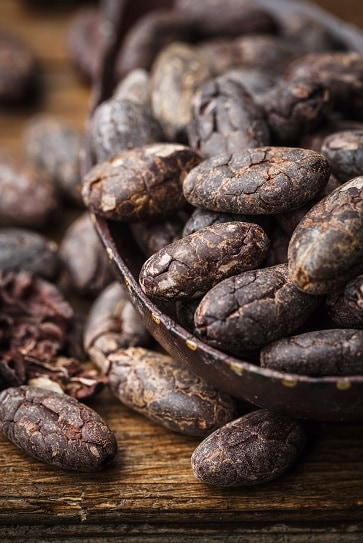 Ferulic acid is an antioxidant which hasn’t entered the public consciousness yet, which is weird, given that it can protect your body against alcohol. The top sources of ferulic acid include wheat flour, dark chocolate (20mg) per 100 grams, beer itself, coffee, peanuts. Ferulic acid has ordinary antioxidant powers, and can improve the efficiency of insulin molecules, allowing bloodstream insulin to fall and de-oilifying your skin.
Ferulic acid is an antioxidant which hasn’t entered the public consciousness yet, which is weird, given that it can protect your body against alcohol. The top sources of ferulic acid include wheat flour, dark chocolate (20mg) per 100 grams, beer itself, coffee, peanuts. Ferulic acid has ordinary antioxidant powers, and can improve the efficiency of insulin molecules, allowing bloodstream insulin to fall and de-oilifying your skin.
According to the alcohol study, ferulic acid combats the reduction in the homemade antioxidant glutathione, perhaps alcohol’s greatest acne danger. The coolest feature was reversing the decrease in vitamin A and vitamin C caused by alcohol. This is despite ferulic acid having no connection to either – it isn’t a molecule which converts like beta-carotene to vitamin A.
Instead, ferulic acid is simply such a strong antioxidant that it relieves the pressure on those vital acne vitamins (which have dual antioxidant function). Or, ferulic acid may be specially structured to combat the oxidative stress that alcohol and its dangerous metabolite acetaldehyde unleash. Ferulic acid is a great secret plant compound either way.
Six – chlorogenic acid (coffee)

The signature medicinal molecule of coffee (unless you consider caffeine to be medicine). Chlorogenic acid is the prince of heart health and emperor of inflammation – more specifically ending it. Plenty of studies show reductions in inflammatory actors behind acne such as COX-2, interluekin-6, and IL-1beta. While also appearing in apples and olive oil, coffee is easily the greatest source. A study found that 100 grams of coffee contained 3.893 grams of chlorogenic acid, almost as much as caffeine at 4.265 grams.
Chlorogenic acid has no psychoactive properties, except the pleasure of waking up with clear skin. Once inside the body, chlorogenic acid metamorphises into the nimbler and more focused caffeic acid, which travels through the blood vessels and positions itself in the skin. Caffeic acid awaits the sun’s rays, and when they arrive, neutralises the usual increase in pro-inflammatory COX-2, by disabling kin kinases which connect the two. This should remove redness from your face which worsens the appearance of existing acne.
Chlorogenic acid is one of several reasons why despite the controversy, coffee can be an acne-friendly part of your day (with a little strategical thinking).
Seven – cinnamaldehyde (cinnamon)
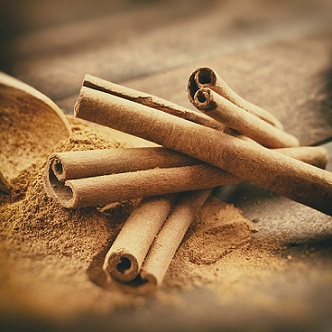 The main bioactive compound in the ground cinnamon spice. Cinnamon consists of 0.5-1% aromatic cinnamon oils, of which 65% consists of cinnamaldehyde. But what does it do? At least 4 different things, the first being boosting insulin sensitivity. This is important for all acne patients, as energy stores which are more sensitive to insulin’s call allow bloodstream insulin to fall, and then the oily skin insulin causes. Cinnamaldehyde upregulates such insulin sensitivity enzymes as PPARδ, PPARγ, and RXR. Consequently, a 2003 study on whole cinnamon in rats found that their skeletal muscles absorbed 17% more glucose per minute.
The main bioactive compound in the ground cinnamon spice. Cinnamon consists of 0.5-1% aromatic cinnamon oils, of which 65% consists of cinnamaldehyde. But what does it do? At least 4 different things, the first being boosting insulin sensitivity. This is important for all acne patients, as energy stores which are more sensitive to insulin’s call allow bloodstream insulin to fall, and then the oily skin insulin causes. Cinnamaldehyde upregulates such insulin sensitivity enzymes as PPARδ, PPARγ, and RXR. Consequently, a 2003 study on whole cinnamon in rats found that their skeletal muscles absorbed 17% more glucose per minute.
Cinnamaldehyde’s second power is slaying microbes in the gut, specifically inflammatory species like Clostridium difficile and candida yeasts. Like quercetin, cinnamaldehyde somehow leaves friendly bacteria untouched.
All these powers could be hiding in a little jar in a cobweb-filled cupboard, right behind a label with a 20 year old sell by date. That’s before we mention cinnamaldehyde’s topical powers. These include an increase in collagen formulation via careful upregulation of IGF-1 on the skin, and reducing hyperpigmentation, by lowering the activity of the tyrosinase enzyme.
Eight – bromelain (pineapple)

A pineapple compound which is proven to accelerate the healing of battered and bruised boxers. 58/74 boxers taking bromelain enjoyed a complete recovery within 4 days, versus just 10 of 72 control boxers.
The reason is bromelain’s extreme anti-inflammatory properties. It’s proven to reduce colon inflammation in mice, burn wound inflammation, and was officially approved in 1993 by Germany’s Commission E as a post-surgery anti-inflammatory. Will it extinguish the fires of your acne? The exact molecular pathways bromelain alters aren’t known, but what is confirmed are reductions in specific immune chemicals linked to acne, such as interluekin-1beta, IL-8, IL-6 and TNF-a.
Bromelain is the signature compound of pineapple, and levels are always high in its juicy flesh, whether on a desert island with just a single palm tree, or a stacked supermarket shelf.
Bromelain’s most famous power is actually breaking down proteins. Bromelain is a proteolytic enzyme, cleaving through amino acid bonds. Consequently, it is popular as a meat tenderiser, and workers in pineapple fields tend to lose their fingerprints after a few years. These proteolytic properties are very simple, easily understood, while the anti-inflammatory properties are more mysterious (for now).
Nine – lycopene (tomatoes)
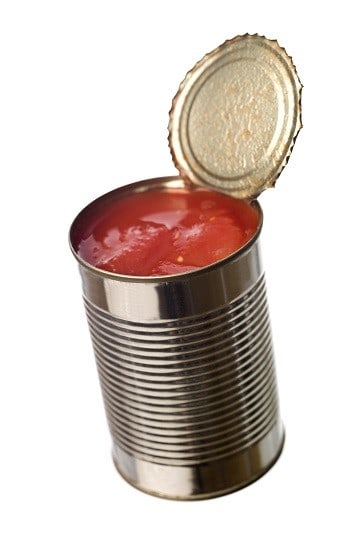 This tomato antioxidant is often hyped up for curing cancer and ending the pandemic of heart disease. That’s cool and all, but what we care about is clear skin, and lycopene looks extremely promising. Lycopene is one of 600 known carotenoids, a type of fat-soluble antioxidant, which combat lipid peroxides, essentially fat soluble free radicals.
This tomato antioxidant is often hyped up for curing cancer and ending the pandemic of heart disease. That’s cool and all, but what we care about is clear skin, and lycopene looks extremely promising. Lycopene is one of 600 known carotenoids, a type of fat-soluble antioxidant, which combat lipid peroxides, essentially fat soluble free radicals.
For example, squalene peroxide is involved in the genesis of most pimples. This 2008 study on whole tomatoes found that lipid peroxides fell in serum, muscle and liver. A pair of Jamaican studies also found reductions from tomatoes.
Lycopene also has more specific powers, like reducing the pro-inflammatory chemical TNF-a by 34.4% after 26 days. Tomatoes are among the richest sources, though not quite the greatest. They have 3041mg per 100 grams next to 4532mg for watermelon flesh.
Lycopene is one reason why cooked tomatoes reign supreme for your acne. After cooking tomatoes for 2, 15 and 30 minutes at 88C, trans-lycopene levels rose by 54-164%. Cis-lycopene rose by 6-35%. Even cooking a tomato soup might liberate the acne-clearing lycopene bound up within the molecular structure.
Ten – sulforaphane (broccoli)
This sulphurous super-molecule is one of the main reasons why broccoli is so acne-friendly. The stellar vitamin C content of 97% per 100 grams is partly why, but sulforaphane is a close second. It’s also found in cabbage and Brussel’s sprouts, and by breaking down into its constituent sulphur, can provide some building blocks for the antioxidant glutathione.
But sulforaphane also has its own powers for acne, including too many anti-inflammatory studies to count, and a secret power of alcohol defence. For health and acne, it’s not alcohol itself that wreaks havoc, but acetaldehyde, its first metabolite, produced in stage 1 of detoxification. A 2013 study found that feeding sulforaphane to mice more than doubled the enzyme responsible for metabolising acetaldehyde, ALDH. Acetaldehyde itself vanished from the bloodstream more rapidly.
Likewise, sulforaphane can specifically protect against the antioxidant depletion caused by NSAIDs, according to a 2017 study. Paracetamol and co are undoubtedly effective, but can drain your glutathione wells to almost empty. Sulforaphane seems to be an acne patient’s go to molecule for preventing against the toxic side effects of other molecules.
Conclusion
This article isn’t an instruction to eat every compound on the list. The point is to show you the sheer acne-clearing potential that exists out there in the world.
Our goal is to convert everyone on Earth to the “diet cures acne” cult, mainly because it does.
Thanks for reading!

